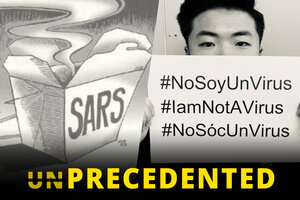Why disease boosts discrimination, and what that costs society

As COVID-19 continues to spread in the United States and around the world, another kind of malady has also emerged: discrimination.
The fact that the novel coronavirus was first reported in Wuhan, China, has placed a target on people of Chinese and Asian heritage. Across the globe, reports have spiked of Asians being verbally attacked, denied service, or actively avoided on public transit and on the street – even though there’s no evidence to suggest that Asians are more likely to spread the disease. Chinatowns have been especially hard hit, with the fallout beginning even before social distancing policies forced restaurants and other businesses to suspend operations. Some public officials continue to refer to COVID-19 as the “Chinese” or “Wuhan” virus.
Unfortunately, we’ve been here before. For centuries, diseases have been used as an excuse to ostracize groups of people who are either perceived to be prone to infection, or from places where the illnesses are thought to have originated. But associating a disease with a specific minority group can put the whole population at risk, says Monica Schoch-Spana, a medical anthropologist at Johns Hopkins University’s Center for Health Security. Members of the stigmatized group may avoid seeking care, she says, while the rest of the community may lower their guard.
Why We Wrote This
These days, the speed at which events unfold can leave us feeling as though every situation is unprecedented and beyond our control. But the past can inform the present. In this new video series, we turn to history to help us understand, and face, today’s biggest issues. Our first episode explores why the spread of disease often brings with it discrimination – and how we might find ways to do better.
Still, while the past shows us where we went wrong, it also provides examples of what people did right.
This episode asks: What can we learn from the consequences of this attitude around past pandemics? And how can we do better?
